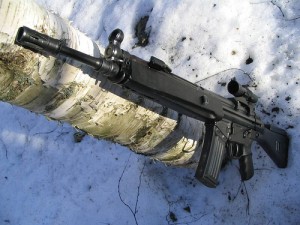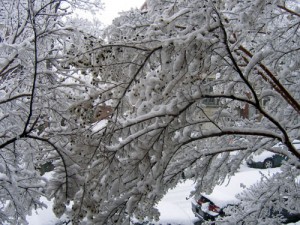 Carrying a firearm in cold weather requires some preparation; in addition to safety challenges, failing to access your weapon quickly can be the difference between a successful hunting trip and returning empty handed, or a successful defense against an assailant and serious injury. With a few additional steps, it is possible to carry and use a firearm while remaining warm.
Carrying a firearm in cold weather requires some preparation; in addition to safety challenges, failing to access your weapon quickly can be the difference between a successful hunting trip and returning empty handed, or a successful defense against an assailant and serious injury. With a few additional steps, it is possible to carry and use a firearm while remaining warm.
When your hands get cold, they get numb, reducing your sensory feedback, and if you put gloves on, you also lose a sense of feel, which can leave you clumsy or ineffective when handling your firearm. Nothing is more important than being able to access and use your weapon quickly, whether you’re in a self-defense situation or hunting, so let’s review a few solutions learned from years of carrying firearms in cold weather.
– I have used the old woodsman’s trick; cutting a thin slit lengthwise in my glove for my trigger finger to sneak through. One drawback you should be aware of; grabbing a snowy branch, or braking a fall may give you a glove full of snow or ice, which I can promise is not fun.
– It’s not pretty, but using skateboard tape on your weapons will give you a non-slip, durable surface. Even with thick gloves on you’ll find the firearm easy to hold on to.
– If you have several firearms, you should consider designating one of them as your ‘cold weather’ weapon, and modify the trigger pull to be much heavier. This will compensate for the lack of feel you’ll experience when wearing gloves.
– Currently I wear thin poly “wicker” gloves under warm mittens allowing me to slide/fling the mittens as needed still providing some hand protection. Make sure the mitten, or outer layer of glove, can be easily ‘flung’ off your hand.
– Another method is Nomex flying gloves inside of a shooting mitten (mitten with a velcroed opening in the palm) allowing you to free your fingers when required.
There are other challenges when carrying a weapon in cold weather beyond simply keeping your hands warm and maintaining a sure grip. If you fall and get snow or ice in the muzzle, your accuracy will be severely degrade and your weapon could even malfunction. A few old tricks to keeping the barrel clean include:
1. Placing a little masking tape over the end of the barrel
2. A condom with a rubber band
3. A band aid placed over the muzzle
When hunting with handguns carry your gun under your coat, protecting it from the elements. Cross draw holsters work well with long coats, allowing quick access. If you prefer shoulder holsters, fasten your outer coat to just below the pectoral muscles. The upper portion will stay open allowing you immediate access to your weapon. Keeping your weapon inside an outer coat like this will protect the firearm in the event you take a tumble, which happens if you’re wandering around in snow and ice.
You can modify your coat with pass-through slits providing instant access to your gun. In really bad weather I prefer carrying “beaters” – true rough duty guns, not “safe queen” guns – allowing me to worry more about the deer in the thicket or the gang-banger lingering in the dark corner rather than my gun rusting.

Lubricants will thicken in extremely cold temperatures, which could lead to a misfire, and believe me, if you’ve pulled the gun and attempted to fire, the worst that can happen is not to get the shot off. To prevent this you can use graphite, thin watch oil, or a synthetic lubricant as these do not freeze or attract dust. I prefer the synthetic lubricants myself.
If you are carrying additional magazines, keep these inside your pockets to prevent misfires; magazines kept on the outside of your clothing will naturally attract more debris.
Once you have decided which methods you will use in cold weather, practice! Don’t just go to the gun range when it’s sunny and warm; go when it’s cold and nasty. See which clothes work for you and how your setup works. I suggest you try with empty firearms first, and after you’ve gotten your holstering and ‘draw’ perfected in your cold weather gear, then add your ammo.
Finally, add your gloves to the process and see how things work (or don’t work, as it might be). If the gloves are a problem, get rid of them! Gloves are cheap compared to your firearm-or your life-so go shopping for two layers that will work for you, the thin, inner layer that you can use in mild weather, and the thicker, outer layer of gloves that you can discard quickly when the time arrives.